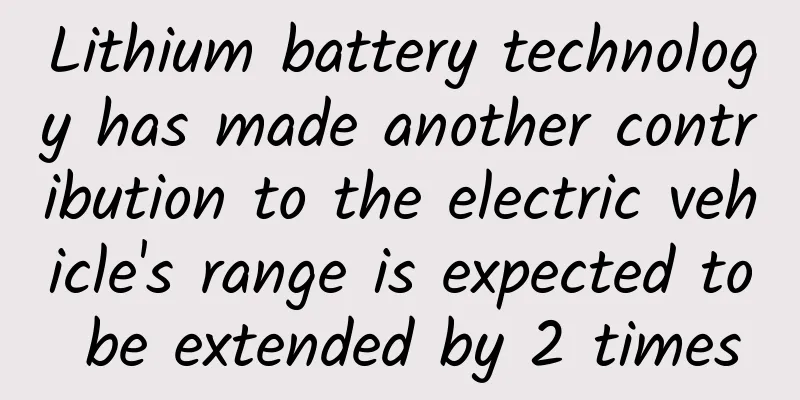Can the purified water sold in supermarkets really be used for experiments?

|
Author: Ye Shi Popular Science Author Reviewer: Li Anjie, Associate Professor, School of Environment, Beijing Normal University gossip The purified water sold in supermarkets can be used for experiments and is inexpensive and of good quality. analyze Let me state the conclusion first. This needs to be discussed based on different situations, and it is not recommended to do so. Recently, the news of the death of Zong Qinghou, the founder of Wahaha, has attracted a lot of attention. While many netizens engaged in scientific research paid tribute to this self-made entrepreneur, they also posted photos of Wahaha purified water in the laboratory, saying that because of its high purity, it can be called "laboratory royal water." The related entry even topped the hot search list, attracting discussions across the Internet. Picture from Weibo Friends who do not have laboratory-related work experience may wonder why pure water is needed for experiments? Can't we use water from the tap? Is the purity of Wahaha purified water really enough for experiments? Let's find out today. What makes purified water pure? As the name implies, pure water refers to the "pure water" left after impurities are removed. What are the impurities in the water? Some are sodium ions and calcium ions from the soil; some are iron ions and copper ions from the water pipes. If we take a pot of water from the tap, boil it, and wait for the water to evaporate, what remains at the bottom of the pot is the residual impurities in the water. Such water quality is obviously not "pure" enough. Generally speaking, laboratories use filtration and ion exchange methods to prepare pure water. And water that has been removed of various ions is also called "deionized water." Distilled water is another type of pure water. It is heated to a high temperature, causing the water to boil, leaving behind the remaining non-volatile impurities. The water vapor is then condensed, and the resulting water is distilled. Compared to deionized water, it has a higher purity. However, its preparation process is also more complicated and the production cost is higher. In general, deionized water can meet the needs of most research work. However, in some extremely strict experimental environments, scientists sometimes need to use double or even triple distilled water. Why do we need to use pure water? The principle is simple. In biological experiments or chemical research, impurities in the water will interfere with the experimental results, which may cause inaccurate data or even failure of the experiment. In addition, some precision instruments are very sensitive. If they are exposed to impurities in the water for a long time, the instruments may be damaged. In addition, if the ion concentration in the water fluctuates, the experimental results will also fluctuate. Considering all the above factors, it is necessary to control the purity of water from the source. Copyrighted stock images, no reproduction is authorized What else do we need to know about laboratory water? According to previous news interviews with Wahaha, many laboratories are indeed happy to use Wahaha's purified water. Liu Guanchen, deputy director of its Food Science Research Institute, also said that the company's purified water uses multi-layer deep filtration technology, "the conductivity is less than 5 uS/cm, reaching the level of laboratory water, and bottled purified water is widely popular in universities and research institutes." As mentioned earlier, impure water contains ionic impurities, which increase the conductivity of water. Therefore, the purer the water, the lower its conductivity. The "µS/cm" here is the unit of conductivity. Generally, the conductivity of our drinking water is in the range of 1-1500 µS/cm. If the conductivity is less than 5 µS/cm, it has met one of the standards for Grade IV laboratory water. According to the guidelines of the US NIH, Grade IV water can be used for daily cleaning of glass instruments and routine experimental work. However, for higher-level experimental water, the conductivity of 5 µS/cm is a bit too high. For example, the conductivity standard for Grade III experimental water is more stringent and cannot exceed 0.25 µS/cm. The conductivity of Grade I water must be lower than 0.056 µS/cm. It can be seen that if the conductivity of Wahaha pure water is not much lower than 5 µS/cm, it may not be able to meet more stringent experimental requirements. Of course, we shouldn't be so demanding on a drinking water. What else do we need to know about laboratory water? From the Internet, we can see that in addition to Wahaha purified water, some netizens also use other brands of purified water for experiments. Some netizens also joked that Wahaha purified water can not only be used as deionized water, but the empty bottles left can also be used as sampling bottles again, which can be said to be full of treasures. Screenshot from the Internet However, amid the carnival, there were also some discussions with different opinions, some believing that these purified waters, which were originally used for drinking purposes, were obviously not professionally suitable for use in experiments. Although the conductivity of Wahaha pure water is low, in addition to conductivity, the experimental water also has other indicators such as "resistivity" and "total organic carbon", which need to be comprehensively evaluated. Some serious studies have found that commercial brands of drinking pure water contain more organic pollutants. The quality of pure water produced by laboratory equipment is much higher than that of commercial drinking pure water. Copyrighted stock images, no reproduction is authorized In other words, if drinking water is used as experimental water occasionally or for some less precise experiments, it is understandable. However, if it is used to replace higher-grade purified water for a long time, it may not be the most appropriate approach. in conclusion Although the purified water sold in supermarkets can indeed meet the water needs of certain experiments, we should not encourage such behavior. References: 1.What is Deionized Water? https://van.physics.illinois.edu/ask/listing/1743 2. Top 9 Uses of Deionized Water in the Manufacturing Process https://labproinc.com/blogs/chemicals-and-solvents/the-uses-of-deionized-water-in-the-medical-device-manufacturing-process 3. Deionization vs Distilled Water https://uswatersystems.com/pages/deionized-water-vs-distilled-water#:~:text=Deionized%20(DI)%20water%20is%20water,condensed%2C%20leaving%20most%20impurities%20behind. 4. The Wahaha purified water sold at 2 yuan per bottle in the supermarket is used to conduct many scientific experiments in laboratories? https://hznews.hangzhou.com.cn/jingji/content/2021-12/11/content_8116489.htm 5. Laboratory Water 6. UNDERSTANDING PURITY AND THE TYPES OF WATER USED IN A LABORATORY (https://techsafety.com/blog/water-type-differences) 7. Water quality standards 8. Angry! Can Wahaha do experiments? Why do we need national standards for laboratory pure water? https://www.shiyanjia.com/knowledge/articleinfo-2415.html Planning丨Ding Zong Editor: Ding Zong |
<<: Northeastern cuisine, why is it so big?
Recommend
China's "first long text goblet" was unearthed in Yunmeng, Hubei!
In September 2020, the Hubei Provincial Institute...
Tencent experts share their experience...What is the difference between operating a billion-level product and a product manager?
Early stage of operation : quickly familiarize yo...
How much does it cost to be an agent for office supplies mini program in Wuhu market?
How much does it cost to be an agent for an offic...
"Tik Tok short video is a good recommendation" you can sell the goods by remixing and copying, teach you how to quickly realize the value on Tik Tok
Share entrepreneurial projects and money-making p...
Lose fat scientifically and embrace health with ease!
Author: Hu Bingjie Zhou Yi Xi'an Medical Coll...
Those with invisible wings are not necessarily angels! Take this rove beetle for example...
On January 6, 2006, the song "Invisible Wing...
8 Taobao trends predicted for 2021
This year, I didn’t spend much energy on the Taob...
How much is the market price for a pound of bull whip? How much does a pound of bull whip cost now?
Influenced by traditional Chinese culture, people...
After waking up from a good night's sleep, my single eyelids became double. Am I sick?
Have you ever had this experience: your eyelids a...
Cable Network's Lost Decade
In the past 20 years, cable networks have focused...
The latest Baidu information flow product manual, giving you a comprehensive understanding of Baidu products
This article shares with you the latest " Ba...
React mobile enterprise data project practice
Course Description This project starts with getti...
Sony makes money quietly by selling components to increase company profits
June 10: Tens of millions of consumers around the...
Android finally supports this feature of iOS, but to be honest, it's a bit useless
A while ago, Shichao saw a piece of news, which r...
The "assembly call" for migratory birds has been sounded again! How do they fly across mountains and seas?
Science Times reporter Ji Chunhong The seasonal c...









